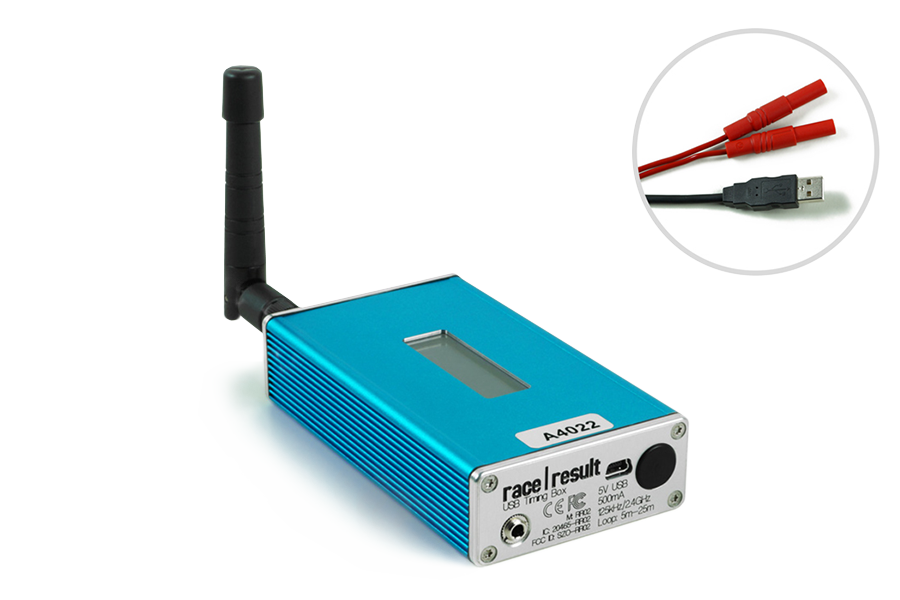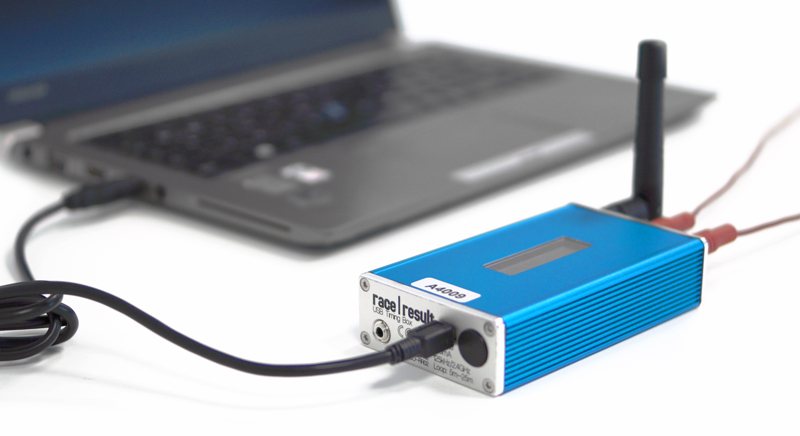USB Timing Box
Oppsummering
- For å bruke en USB Timing Box til å lese av chipper in en kioskløsning må man installere TagTool.
- USB Timing Box kan brukes på tre forskjellige måter:
- Til tidtaking
- Til å lese chipper i kioskløsning
- Store & Copy Mode (only available from FW 2.5 and with V2 Transponders)
Forberedelser og oppkobling⌁
For å bruke en USB Timing Box til å lese av chipper in en kioskløsning må man installere TagTool.
USB-TimingBoxen må kobles til datamaskinen ved hjelp av USB-kabelen som medfølger. I tillegg må du koble inn kobberantennen/rød ledningen, som medfølger, i de to røde inngangene.
Bruksområder⌁
Tidtaking⌁
In this mode, the USB Timing Box operates like a Decoder with Active Extension. It reads the transponders as they pass over the loop, and the computer reads the passings from the box. It can act as a base station for a Loop Box where it can receive repeated passings. It can also read stored passings from ActivePro transponders. The USB Timing Box should be set to Loop ID 1 if this is the case.
Kiosk⌁
In this mode, the USB Timing Box works with the TagTool on your computer. You can compile a list of your transponders, check the battery level of the transponders, and make a chip file for your events.
Lagre og Kopiere⌁
This mode is an extended version of the Loop Box's Store Mode (see Loop Box Modes). When crossing the USB Timing Box in Store & Copy Mode, the transponder will store a detection. As the detection is stored, the transponder sends a passing, which on the Loop Box in Store Mode is only used to make the Loop Box blink to signal the detection. In Store & Copy, the USB Timing Box will blink, and also save the timestamp of the stored passing.
Note that in this special mode, the passing is only sent once, the transponder will not wait for an acknowledgement from the USB Timing Box, so the detection in this mode is not as reliable. The timestamp saved in the USB Timing Box is also not as precise as the actual stored passing which will be transmitted to the next timing point.

